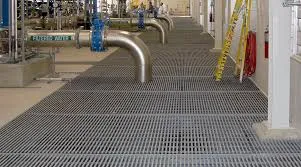
-
 Afrikaans
Afrikaans -
 Albanian
Albanian -
 Amharic
Amharic -
 Arabic
Arabic -
 Armenian
Armenian -
 Azerbaijani
Azerbaijani -
 Basque
Basque -
 Belarusian
Belarusian -
 Bengali
Bengali -
 Bosnian
Bosnian -
 Bulgarian
Bulgarian -
 Catalan
Catalan -
 Cebuano
Cebuano -
 China
China -
 China (Taiwan)
China (Taiwan) -
 Corsican
Corsican -
 Croatian
Croatian -
 Czech
Czech -
 Danish
Danish -
 Dutch
Dutch -
 English
English -
 Esperanto
Esperanto -
 Estonian
Estonian -
 Finnish
Finnish -
 French
French -
 Frisian
Frisian -
 Galician
Galician -
 Georgian
Georgian -
 German
German -
 Greek
Greek -
 Gujarati
Gujarati -
 Haitian Creole
Haitian Creole -
 hausa
hausa -
 hawaiian
hawaiian -
 Hebrew
Hebrew -
 Hindi
Hindi -
 Miao
Miao -
 Hungarian
Hungarian -
 Icelandic
Icelandic -
 igbo
igbo -
 Indonesian
Indonesian -
 irish
irish -
 Italian
Italian -
 Japanese
Japanese -
 Javanese
Javanese -
 Kannada
Kannada -
 kazakh
kazakh -
 Khmer
Khmer -
 Rwandese
Rwandese -
 Korean
Korean -
 Kurdish
Kurdish -
 Kyrgyz
Kyrgyz -
 Lao
Lao -
 Latin
Latin -
 Latvian
Latvian -
 Lithuanian
Lithuanian -
 Luxembourgish
Luxembourgish -
 Macedonian
Macedonian -
 Malgashi
Malgashi -
 Malay
Malay -
 Malayalam
Malayalam -
 Maltese
Maltese -
 Maori
Maori -
 Marathi
Marathi -
 Mongolian
Mongolian -
 Myanmar
Myanmar -
 Nepali
Nepali -
 Norwegian
Norwegian -
 Norwegian
Norwegian -
 Occitan
Occitan -
 Pashto
Pashto -
 Persian
Persian -
 Polish
Polish -
 Portuguese
Portuguese -
 Punjabi
Punjabi -
 Romanian
Romanian -
 Russian
Russian -
 Samoan
Samoan -
 Scottish Gaelic
Scottish Gaelic -
 Serbian
Serbian -
 Sesotho
Sesotho -
 Shona
Shona -
 Sindhi
Sindhi -
 Sinhala
Sinhala -
 Slovak
Slovak -
 Slovenian
Slovenian -
 Somali
Somali -
 Spanish
Spanish -
 Sundanese
Sundanese -
 Swahili
Swahili -
 Swedish
Swedish -
 Tagalog
Tagalog -
 Tajik
Tajik -
 Tamil
Tamil -
 Tatar
Tatar -
 Telugu
Telugu -
 Thai
Thai -
 Turkish
Turkish -
 Turkmen
Turkmen -
 Ukrainian
Ukrainian -
 Urdu
Urdu -
 Uighur
Uighur -
 Uzbek
Uzbek -
 Vietnamese
Vietnamese -
 Welsh
Welsh -
 Bantu
Bantu -
 Yiddish
Yiddish -
 Yoruba
Yoruba -
 Zulu
Zulu
frp launder
Understanding FRP Launders Innovations in Water Treatment Technology
In recent years, the water treatment industry has seen significant advancements, particularly with the introduction of Fiber-Reinforced Plastic (FRP) launder systems. These innovative solutions have emerged as crucial components in variouswater treatment processes, including wastewater management and industrial applications. This article delves into the concept of FRP launders, their benefits, applications, and the technology behind them.
What are FRP Launders?
FRP launders are trough-like structures designed to transport liquids, typically used in sedimentation and filtration processes. They are made from a composite material that combines plastic and fiberglass, providing strength, durability, and resistance to corrosive environments. The lightweight nature of FRP allows for easier handling and installation, making them an attractive alternative to traditional materials like steel and concrete.
Advantages of FRP Launders
1. Corrosion Resistance One of the primary advantages of FRP launders is their resistance to corrosion. Unlike metal, which can deteriorate when exposed to harsh chemicals and environmental factors, FRP can withstand aggressive conditions, significantly extending the lifespan of the equipment.
2. Low Maintenance FRP launders require minimal maintenance compared to traditional materials. Their resistance to scaling and fouling means that they can maintain smooth operation without the frequent cleaning required for other materials, reducing operational costs.
3. Lightweight and Easy to Install The lightweight nature of FRP makes transportation and installation significantly easier. This advantage not only saves time but also minimizes labor costs associated with installation.
4. Customizability FRP launders can be easily molded into various shapes and sizes according to the specific needs of a project. This level of customization allows for the optimization of water flow and treatment efficiency in different applications.
frp launder

5. Environmental Friendliness The use of FRP in water treatment processes can contribute to sustainability efforts. They are often manufactured with recyclable materials and can be designed to reduce energy consumption during their lifecycle.
Applications of FRP Launders
FRP launders are versatile and find extensive applications in several domains
- Wastewater Treatment In municipal sewage treatment plants, FRP launders are utilized in sedimentation tanks to facilitate the collection of clarified effluent.
- Industrial Processes Industries such as mining, chemicals, and food processing utilize FRP launders for efficient liquid transport within their water treatment systems.
- Recycling Facilities In recycling operations, these launders help in the separation processes, ensuring that liquid fractions are effectively managed.
- Water Management Systems From stormwater management to aquaculture, the adaptability of FRP launders plays a significant role in enhancing water quality and efficiency.
Conclusion
The advent of FRP launders marks a significant milestone in the evolution of water treatment technologies. With their robust performance, cost-effectiveness, and environmental benefits, FRP launders are increasingly becoming the preferred choice for many applications. As industries continue to focus on sustainability and efficiency, the importance of innovative solutions like FRP launders will undoubtedly grow, paving the way for more sustainable water management practices. The continued development and integration of these technologies are essential for addressing the global challenges of water scarcity and pollution.
Latest news
-
Exploring the Benefits of Top Hammer Drifter Rods for Enhanced Drilling PerformanceNewsJun.10,2025
-
High-Precision Fiberglass Winding Machine for GRP/FRP Pipe Production – Reliable & Efficient SolutionsNewsJun.10,2025
-
FRP Pipes & Fittings for Shipbuilding - Corrosion-Resistant & LightweightNewsJun.09,2025
-
Premium FRP Flooring Solutions Durable & Slip-ResistantNewsJun.09,2025
-
Premium Fiberglass Rectangular Tanks Durable & Lightweight SolutionNewsJun.09,2025
-
Tapered Drill String Design Guide Durable Performance & UsesNewsJun.09,2025









